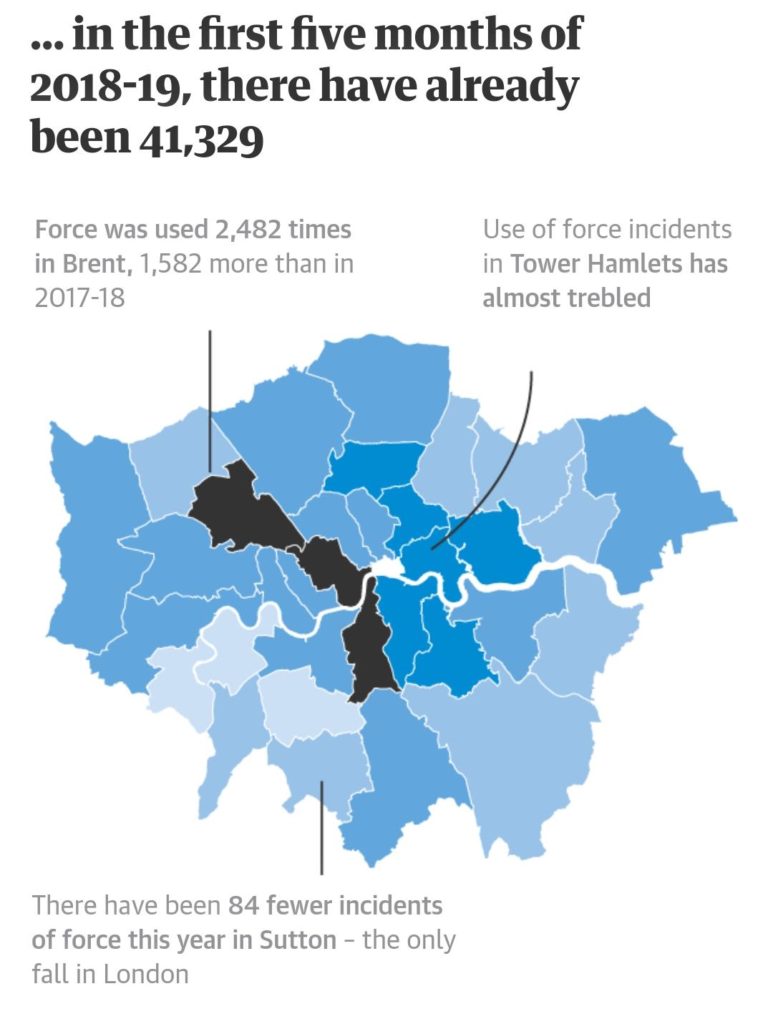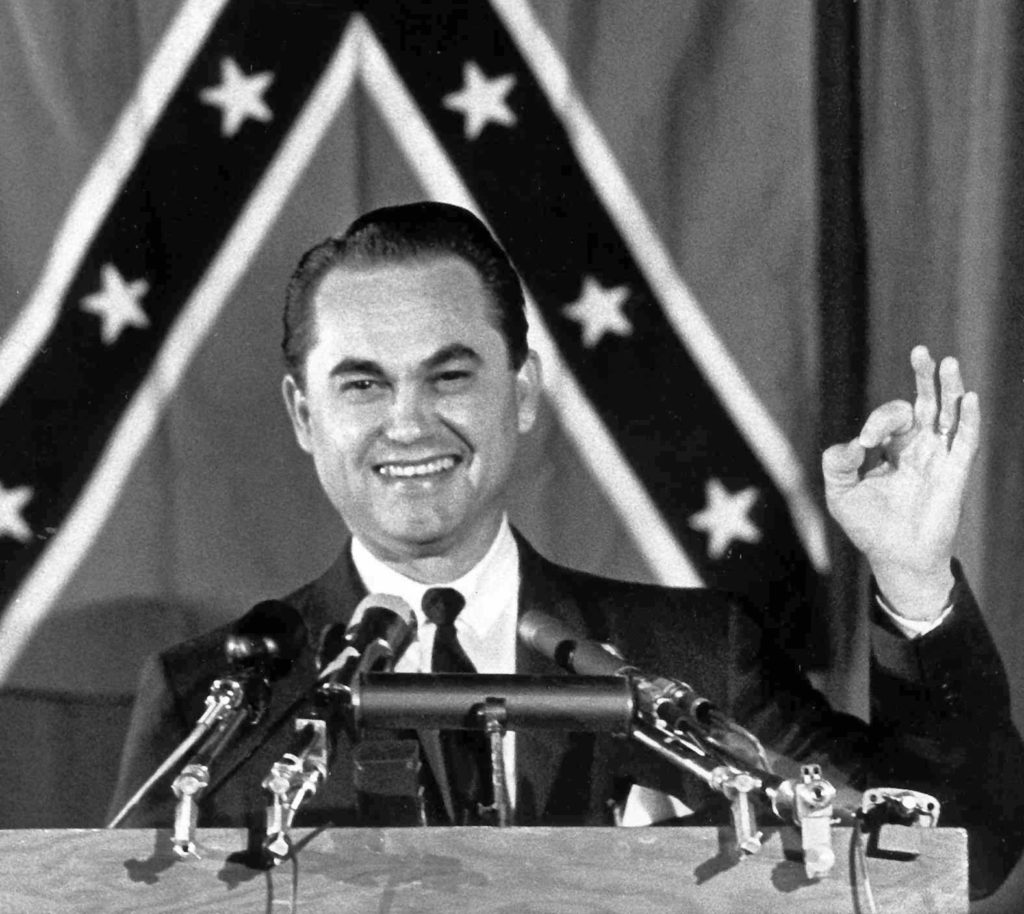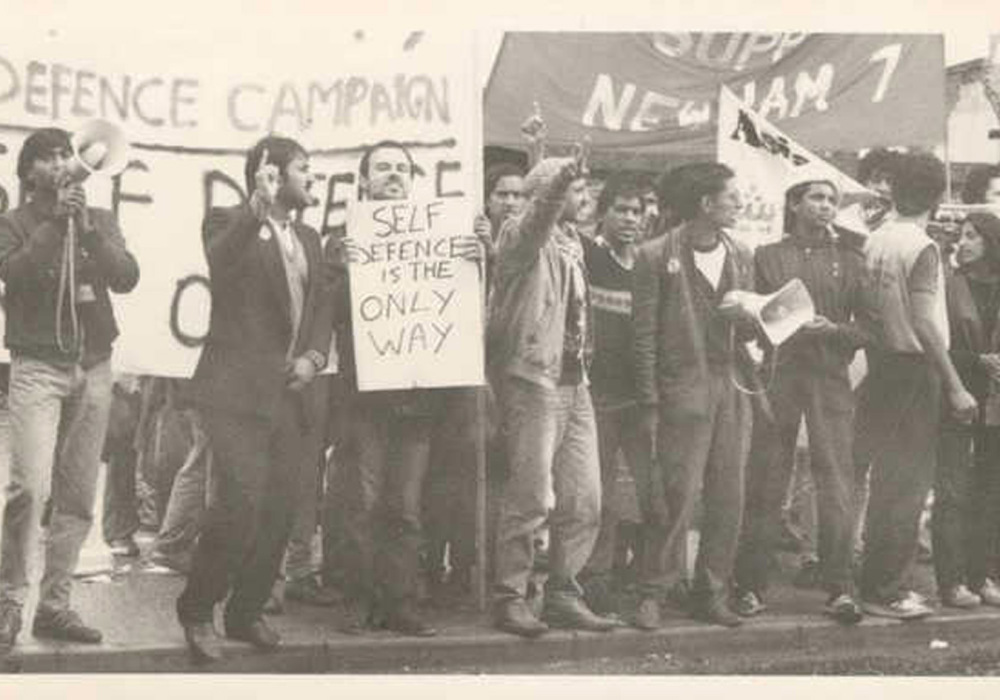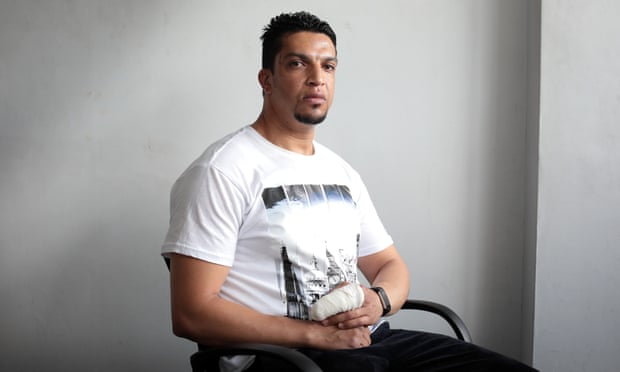Videos have been circulating on social media of an alleged case of police brutality against the father of a disabled child, known as the ‘July 9th Incident’. Statistics collected by the police show that this is not an isolated with a three time increase of violence used by the police in Tower Hamlets alone in the past year. With violence more likely to be used on BAME residents by the police than non-BAME. The blog asks, can we still go with a business as usual attitude or take a more radical approach to restore trust in statutory bodies and monitor racist incidents include those of institutional racism.
Separating Fact from Fiction – 300% Increase in Police Violence in Tower Hamlets
We have all been horrified by the incidents of the father of a disabled child being beaten by police for parking in the wrong place. One would think that this is an isolated incident, unfortunately it’s not. In Tower Hamlets alone, in the past year there has been a treble rise of incidents of police using violence. With BAME people more likely to be on the receiving end of police violence than non BAME people. This is against a background of a 79% increase of the use of violence in London compared to Tower Hamlets where we have seen a 300% increase.
The same goes for other police operations such as Trident, Shield, Domain and Continuum and event risk assessment forms of policing, which have been declared racially discriminatory by academics, human rights groups, the UN, Amnesty International, and the London mayor.
We have had the usual ‘business as usual’ statements from statutory bodies. Activists and community organisation, not satisfied with these statements have called a demonstration. However given the rising incidents of police violence against BAME residents, a deeper investigation needs to happen and looking for at the culture.

Deconstructing the language of Law and Order

In the United States, when segregationist policies were being dismantled, segregationist politicians turned to Law and Order as a coded language to still maintain those policies under the guise of criminal justice. The most famous instant being Governor George Wallace. In 1968 Wallace ran a campaign supporting law and order and states’ rights on racial segregation.This strongly appealed to rural white Southerners and blue-collar union workers in the North.
In the United States this has boiled over into entire communities being penalised by police forces, on paper are meant to protect them. Eroding trust in public institutions, which eventually lead to street protests and the ‘Black Lives Matter Movement’. Has the language adopted by politicians for short term electoral gains, being tough on crime, for example in Tower Hamlets, operation Continuum or the language around gang violence or war on drugs, given a green light to the local police force to apply more force when interacting with local residents?
David Lammy MP said the rapid rise in the use of force was a sign of the police stepping up the ill-advised war on drugs at a time when gang crime was exploding across the country, particularly in London. “The unfortunate truth is that escalating the use of force has proven to be futile,” he said. “As the use of force has gone up, so has crime.
“The war on drugs has failed and we need to seriously begin considering alternatives. A public health approach to drugs, as used in other advanced economies, must be a starting point.”
Time for a Tower Hamlets Monitoring Project?

Newham Monitoring Project (NMP) was formed 1980 out of local campaigns against the racist murder of teenager Akhtar Ali Baig in East Ham, after statutory agencies failed to respond adequately. NMP’s founding aim was to monitor both racist attacks and statutory response to them in order to campaign effectively around the resultant issues for justice and change.
Shortly after its formation, the organisation extended its remit beyond monitoring racist attacks to include reports of police harassment and misconduct within the local the black community. NMP began documenting case examples and published yearly reports that argued the existence of institutional racism and how this in turn shaped what it perceived as the societal criminalisation of black people. It also aligned with a series of community campaigns which claimed to be for progressive social change and justice, such as the right to self-defence by members of the black community in response to racist attacks.
In 1983, NMP initiated a 24-hour emergency helpline run by trained volunteers to provide immediate assistance to people with complaints of racial violence.
Although self-organisation of black communities was central to its founding aims, it worked with white people who defined as ‘anti-racists’ in order to align its work with wider demands for social justice.
NMP has been associated with justice campaigns such as those of the Newham 7 and Newham 8, Stephen Lawrence and many involving deaths in police custody such as Ibrahima Sey and Shiji Lapite. It has also worked alongside many other organisations working with the black community such as Newham Asian Women’s Project, Southall Black Sisters and the United Friends and Families Campaign, other organisations within the anti-racist movement such as the Institute of Race Relations and Campaign Against Racism and Fascism (CARF) as well as organisations working on a broader level for justice such as INQUEST.
We have witnessed a 300% increase of violence by police against residents in general, with disproportionate being members of the BAME community. Given alleged institutional failure, is it time for ordinary residents to take up the task and monitor the police and other statutory bodies including the Council? Should we address this incident as an individual case or a manifestation of a wider structural racism by public bodies?
Akala talking about structural racism and the need to confront and tackle it.


Recent Comments